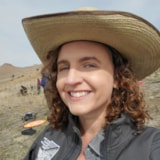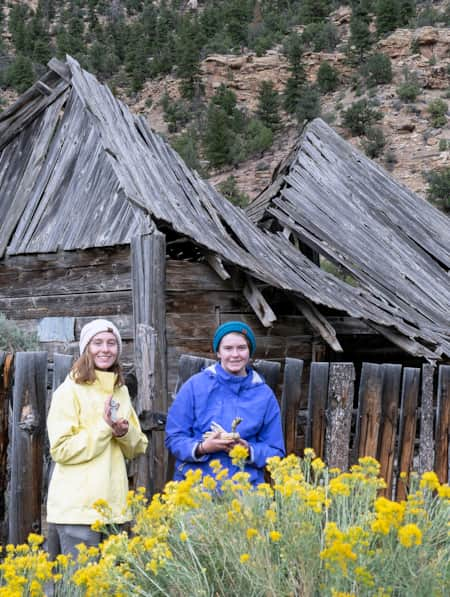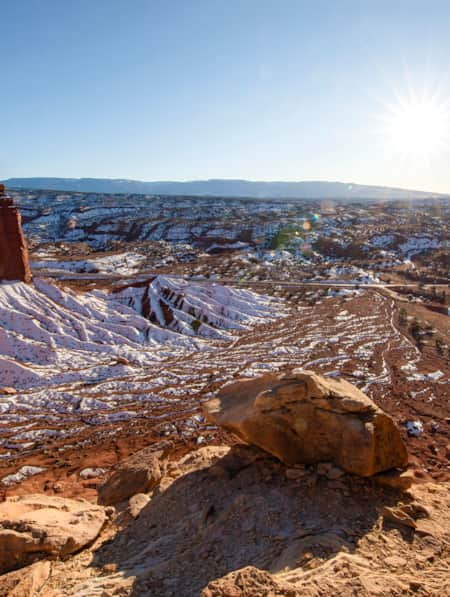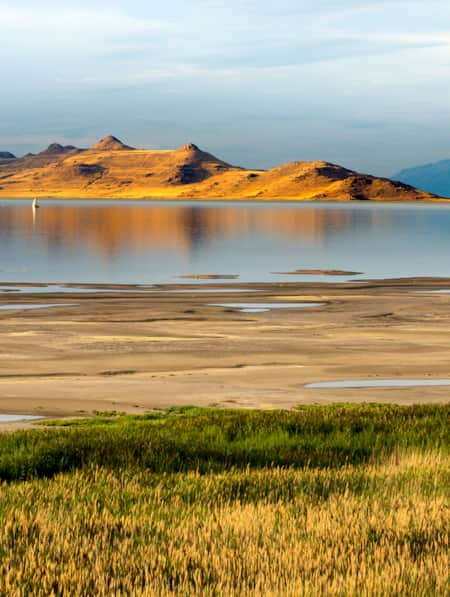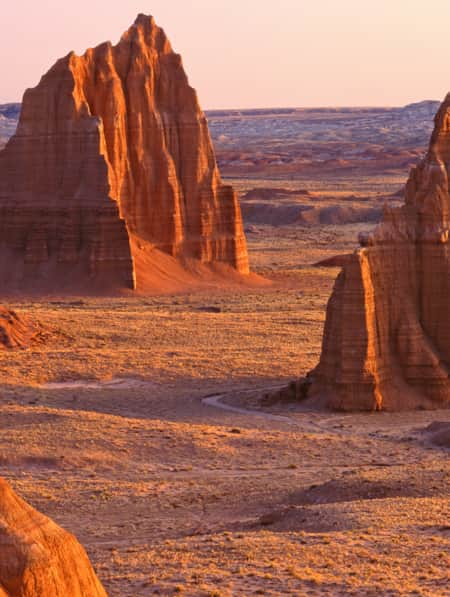How to Visit Rock Imagery Sites Like an Archaeologist
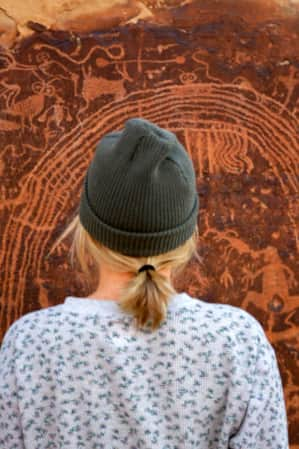
In Utah, rock imagery sites boldly announce their presence with splashes of color and confident parades of familiar icons: bighorn sheep, bird tracks and ghostly human figures. Rock imagery conveys loud and urgent messages across millennia, and annually draws hundreds of thousands of visitors to hear what these sites have to say. As an archaeologist, I’m often expected to know “what does this mean?” But it’s a conversation overheard by people like me (a Westerner, of European-American descent) and only faintly understood. There are words I can understand (“a spiral to the left of the warrior, and mother-and-child pairs of deer streaming by to the right”), but I can’t parse the idiom.
These snippets of conversation overheard and trapped in amber weren’t intended for me. The ancient authors from thousands of years ago certainly knew their imagery would last into the future, but they were communicating a message to their own contemporaries and their own descendants. (Read: "Ancient Pictographs, Petroglyphs and Timeless Mysteries")
Contemporary Native American people who can trace their ancestry back to Utah’s canyons, valleys, mountains and deserts will tell you as much: These were messages left for them by their ancestors, and they can hear the meaning just fine (Read: "Following the Markings of Native American History"). Through traditional knowledge, Native Americans are able to read into the rock and understand when a zigzagging line represents a snake, the meander of a stream, or the travels of a family across time and space. What’s more, Native Americans are under no obligation to be translators for a voyeuristic audience such as myself. They are the intended recipients of these missives, and it is the role of the rest of us to politely listen to their conversation because, after all, we are visitors in their ancestral home. (Learn about travel recommendations to respect and appreciate Native Nations and view the “Bears Ears Area Starter Kit” for an introduction to some of the lands and sites steeped in Native culture and tradition.) For those of us without the traditional knowledge to decode the meaning, it’s enough to be able to appreciate the creativity and beauty of these ancient writers and artists. (Read: "Art Keeps the Native American Culture Alive")
Even though I may not be privy to the innermost meanings of these rock imagery sites, visiting them with respect is my passion and expertise. These tips will help you wring every last drop of experience out of sites, while showing the respect and deference they deserve.
"Rock imagery conveys loud and urgent messages across millennia, and annually draws hundreds of thousands of visitors to hear what these sites have to say."
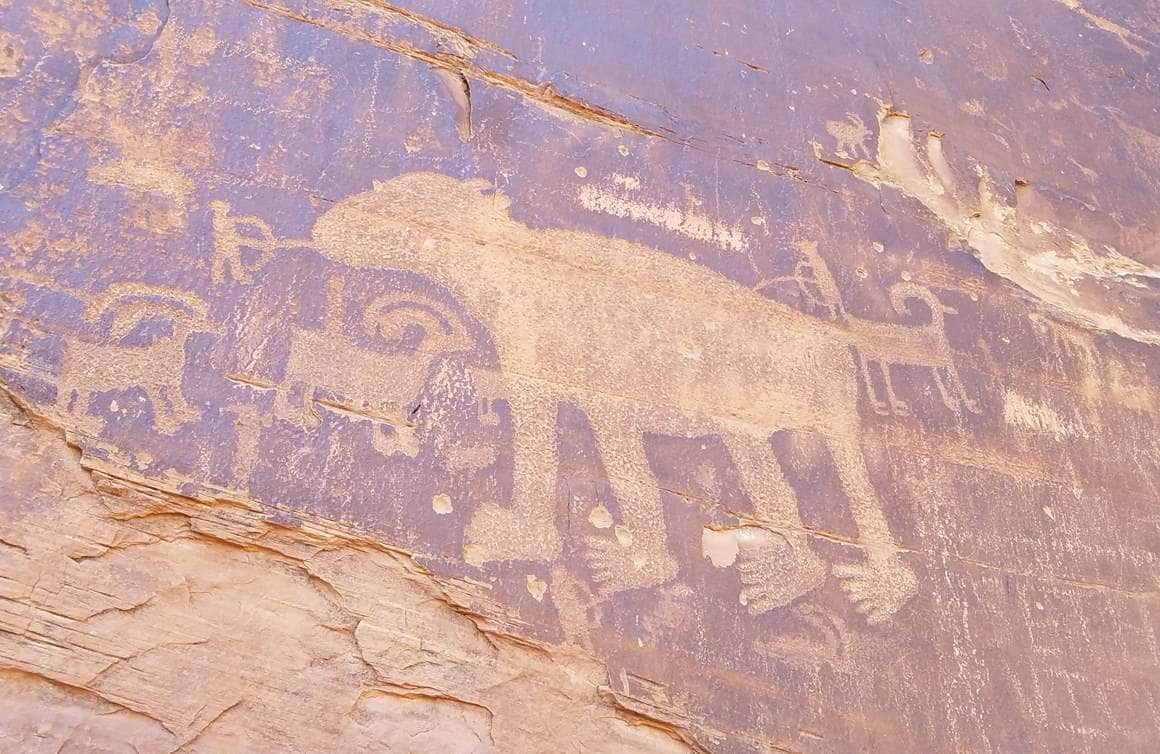
Rock imagery sites boldly announce their presence with splashes of color and confident parades of familiar icons: bighorn sheep, bird tracks and ghostly human figures.
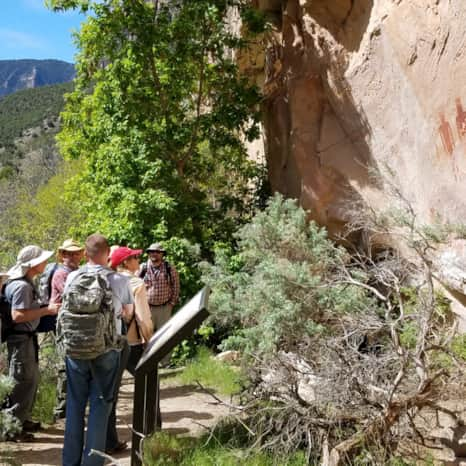
Remember to approach rock imagery sites as you would other sacred spaces.
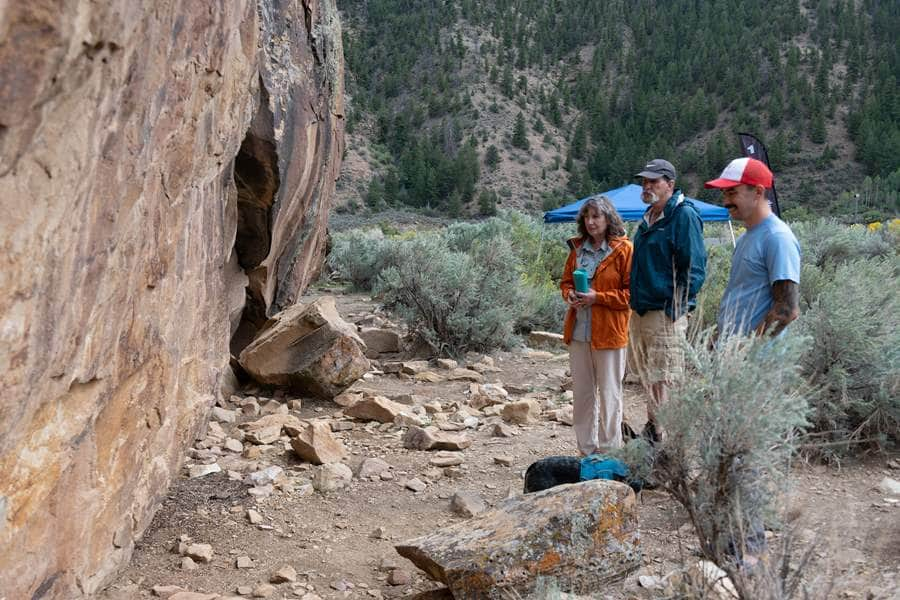
Nine Mile Canyon — a natural conduit through Utah's Book Cliffs — is famous for its well-preserved and abundant collection of prehistoric petroglyphs.
You may be standing in a sacred place. So practice the respect you might use in a cathedral or a temple.
Visitors should approach these sites as they would other religious spaces. These places will move some toward quiet contemplation and introspection while other visitors may not feel the same spiritual resonance. You can expect to have different experiences, but you should always strive to be respectful.
Take a proverbial step back and look at your surroundings.
While you have been looking at the rock imagery, it has been looking right back at you and past you. What does it see? What does it hear? How might this place change across the seasons and millennia? Bring your binoculars to scan nearby canyon walls for more rock imagery, granaries or even cliff dwellings in some portions of the state. (Read: “The 46 Miles of Nine Mile Canyon”)
Bring a guidebook to Utah rock imagery.
People have thrived in Utah for 13,000 years and left behind an incredible array of archaeological sites. Bringing a guidebook can help you narrow down when in time you are looking, and help you understand the different cultures and peoples who left their mark on this space. Oftentimes, rock imagery sites were added on to over the course of many hundreds of years. You may be looking at a chorus of voices speaking in slightly different tongues. (Read: "The Petroglyphs of Comb Ridge")
Even though it’s not as old, it’s still important.
Oftentimes, there are more “modern” inscriptions on rock, and this might feel like vandalism. Dates from the 1800s or even 1900s might give you pause, but these are also important for archaeologists. You and I have the privilege to send a text or make a phone call to tell loved ones we made it to a destination safely. One hundred years ago, making a mark on a canyon wall told passersby that others had been here before or who had claimed the land. (Read: "A Rural Community Leading the Way in Stewardship and Preservation")
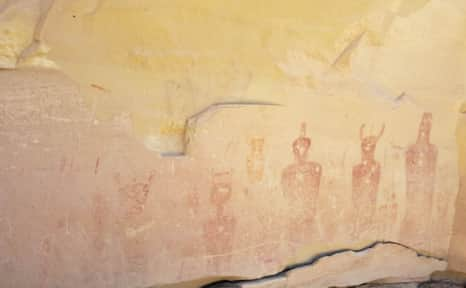
Through traditional knowledge, Native Americans are able to read into the rock and understand when a zigzagging line represents a snake, the meander of a stream, or the travels of a family across time and space.
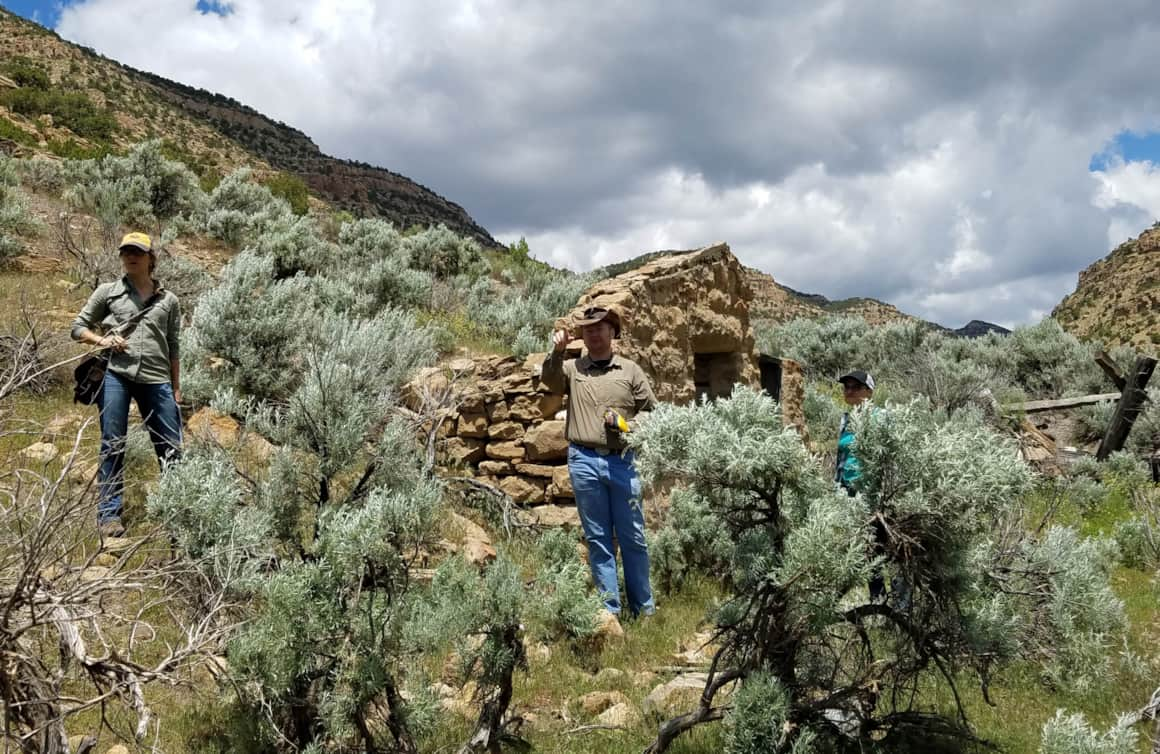
Bringing a guidebook can help you narrow down when in time you are looking, and help you understand the different cultures and peoples who left their mark on the spaces you visit.
Be aware of where you are walking. Stay on trails and help pets and children to do the same.
The sand below these rock imagery panels may be archaeologically rich in layer upon layer of prehistoric surfaces, campfires and paint palettes. Walking across these places may disturb them by removing or compacting sediments that have been carefully piled over for hundreds of years. Using rubber tips on your hiking poles can be a great way to make sure you don’t scuff sandstone on the ground.
You may want to get close to rock imagery, but be careful not to touch it directly.
These rocks are home to living communities of lichen, bacteria, and other small plants and animals. Your exotic dirt and oils could cause an imbalance that may loosen the images from the rock and cause permanent damage. (Read: “Soil Sleuth: Protecting Utah’s Living Landscapes”)
Find creative ways to interact with the site.
A lot of people feel an urge to connect with the past by writing or scratching over rock imagery — please refrain from doing that! Some sites will have a trail register where you can record your experiences (we do keep these, I promise!). Bring a notebook or sketch paper to draw, paint and write your own reflections while at the site. Bring a camera and take your time setting-up shots that communicate your feelings and impressions. But under no circumstances is it ethical or legal to leave your own mark on or around these sites. (Read: “A Photographer’s Guide to Mindful Travel”)
Eating, drinking and camping should all be done at a distance from these sites.
It’s a sign of respect to give these sites your attention while you are there, so I don’t recommend consuming anything while on site other than sips from your water bottle. Also, I can personally attest to how frustrating it is to find modern corn and sunflower seeds in excavations! Humans living their lives are how these sites are made and how they are modified, so be mindful of what traces you leave behind.
Pack it in, pack it out — but nothing more!
Please bring all your trash back with you for disposal, and, of course, if you find trash that isn’t yours, I encourage you to help keep these places clean. (And thank you!) But please leave things that are not clearly modern trash — even things such as old tin cans and glass bottles can help archaeologists understand how people throughout history used these spaces. And, of course, removing artifacts from sites — be they ancient or as young as 50 years old — is a legal and moral offense. (Read: “Responsible Travel in Utah”)
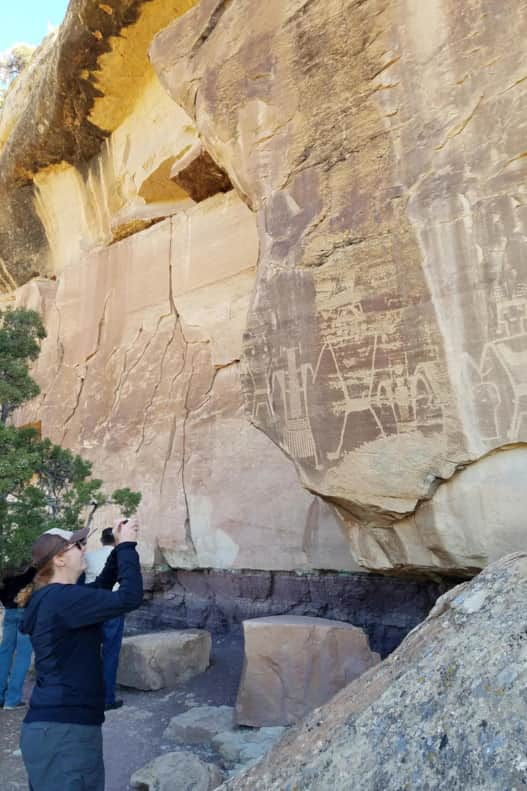
The sand below these rock imagery panels may be archaeologically rich in layer upon layer of prehistoric surfaces, campfires and paint palettes — be sure to watch your step.
Photo: Utah Division of State History
"These places will move some toward quiet contemplation and introspection while other visitors may not feel the same spiritual resonance. You can expect to have different experiences, but you should always strive to be respectful."
There are untold thousands of rock imagery sites across Utah, and hundreds of thousands of archaeological sites of every stripe. I want visitors to feel empowered to make the right visitation choices on all of these sites, because it is important to connect with the people who came before us. You can learn more about Utah’s archaeology and how to protect it at history.utah.gov/upan. And whether you are planning your first trip to Utah or you are a local, our “Stop Archaeological Vandalism” pledge offers essential tools so that visitors can recognize an archaeological site and to keep it safe.
These incredible places have been here for thousands of years hosting visitors, creating memories for travelers and helping so many of us find a deep human connection. By visiting, you become a part of that tradition, and by visiting with respect, you help us all as we protect the past.
If you’re motivated to help, Pledge to Stop Archaeological Vandalism and please share with others.
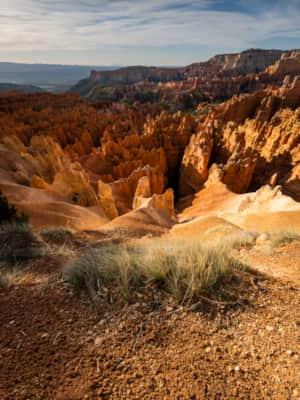
How to Visit Utah's National Parks
Get the most out of a visit to Utah’s parks and monuments, while also ensuring they stay Forever Mighty, by following these tips.
